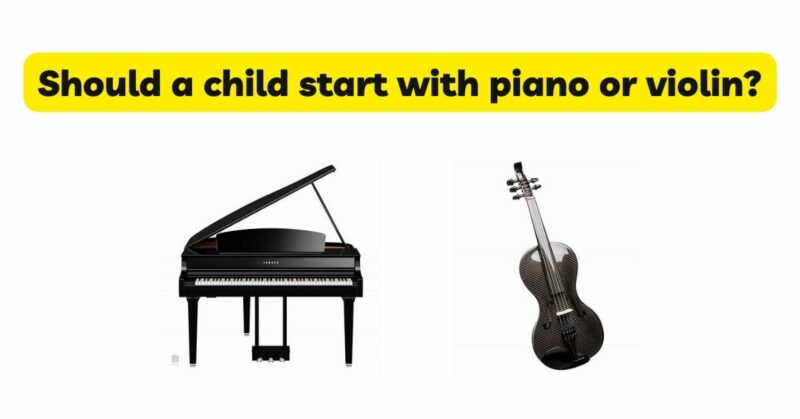Music education plays a vital role in a child’s development, fostering creativity, discipline, and cognitive skills. As parents, we often face the dilemma of selecting the ideal instrument for our children to begin their musical journey. Among the popular options, the piano and the violin stand out for their distinct characteristics and unique learning experiences. In this article, we will explore the advantages and considerations associated with each instrument, aiming to provide insights that will assist parents in making an informed decision.
I. The Piano: A Gateway to Musical Fundamentals
- Accessibility and Ease of Learning: The piano offers a visually intuitive layout of keys and an organized arrangement of notes, making it relatively easier for young learners to comprehend music theory and develop a solid foundation. Its fixed pitch and straightforward technique reduce initial complexities and encourage students to quickly grasp fundamental concepts such as melody, rhythm, and harmony.
- Versatility and Solo Performance: One notable advantage of the piano lies in its versatility. As a solo instrument, it allows children to explore a wide range of musical genres, from classical and jazz to pop and contemporary. Furthermore, the piano’s full-range capability enables young pianists to play both the melody and accompaniment simultaneously, fostering a comprehensive understanding of music composition.
- Experiencing the Physicality of Music: Playing the piano involves utilizing both hands independently, developing coordination, dexterity, and fine motor skills. The instrument’s weighted keys require varying levels of finger strength and control, providing a physical workout while playing. This tactile experience can be particularly beneficial for young children’s cognitive and physical development.
II. The Violin: A Journey of Expressiveness and Discipline
- Emotional Expression and Artistry: The violin is renowned for its expressive capabilities, allowing young players to convey emotions through its rich, resonant sound. Learning the violin nurtures a deep sense of musicality, teaching children to produce a vast range of tonal variations through bowing techniques and subtle finger movements. The instrument’s intimate connection with the player’s body enhances self-expression and encourages creativity.
- Ear Training and Intonation: Playing the violin requires acute listening skills, as the absence of frets demands precise finger placement for accurate intonation. This emphasis on ear training fosters a keen sense of pitch and aids in developing aural skills. By honing their ability to reproduce and identify musical notes accurately, young violinists cultivate a strong musical ear, an asset that can be transferred to other instruments in the future.
- Patience and Discipline: Mastering the violin demands dedication and discipline. Learning to produce a beautiful sound requires persistence and patience, as students navigate the challenges of proper bowing techniques, finger placement, and posture. The instrument’s steep learning curve instills resilience and the value of consistent practice, fostering a strong work ethic that can extend to various aspects of a child’s life.
III. Considering the Child’s Personality and Learning Style
- Personality Traits: When deciding between the piano and the violin, it is essential to consider the child’s temperament and personality. Children who thrive in a structured and disciplined environment may find the violin’s meticulous technique and practice routines rewarding. On the other hand, children who enjoy exploring multiple musical genres and desire more immediate satisfaction from solo performances might lean towards the piano.
- Learning Style: Children exhibit diverse learning styles, and it is crucial to choose an instrument that aligns with their preferences. Some children benefit from the visual and tactile learning experience offered by the piano, while others may thrive with the violin’s auditory and kinesthetic learning approach. Observing a child’s inclinations towards rhythm, melody, or texture can provide valuable clues in determining the instrument that suits them best.
Conclusion:
Choosing between the piano and the violin as a child’s first instrument is a decision that warrants thoughtful consideration. The piano offers a solid foundation in music theory, versatility, and a visual learning experience, while the violin offers emotional expression, discipline, and a focus on listening skills. Ultimately, the decision should take into account the child’s personality, learning style, and individual interests. It is crucial to remember that regardless of the chosen instrument, a supportive and nurturing environment, along with a commitment to regular practice, is essential for a child’s musical growth and enjoyment.


